Artifical Life Exploration
Training creatures to evolve their brains and bodies towards a fitness goal.
The GitHub repository for this project is located here.
Short Teaser
What is this?
This project is centered around evolving virtual creatures made up of simulated blocks and neurons. We start by spawning unevolved creatures of a certain random configuration, then there creatures “learn” to complete a specified task automatically over time! Throughout this short blog we will walk through this evolution process and how we implement it.
The creatures in this project are evolved by piecing together “main body” links. Mutations can be: slicing mutations that cut the genome at some point, combination mutations that graft two sliced creatures together, and standard weight mutations that change weights in the creatures brain. A diverse set of ancestors are created, and over time these configurations are evolved by the above mentioned operations.
This setup is used as I wanted to enforce a catepillar-like evolution progression. The fitness function used minimizes
y+h
where y is the final y coordinate of the creature and h is the maximum height the creature reached during its life.
Starting Genotypes and Mutations
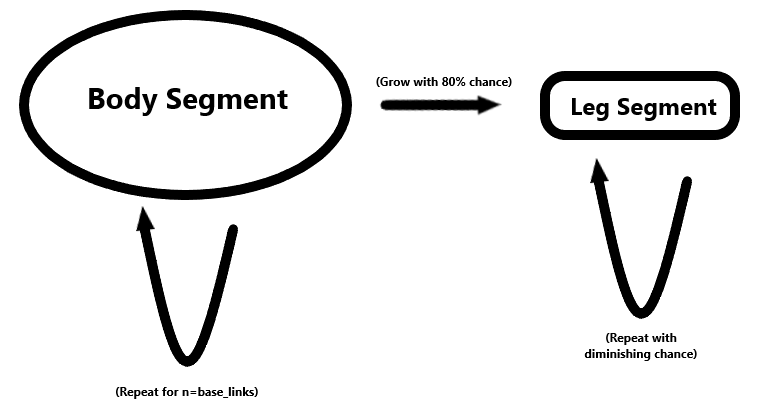
Ancestor (first parent) encodings are generated as shown above, then further encodings are evolved.
The below figure showcases the two of the three mutation possiblities:
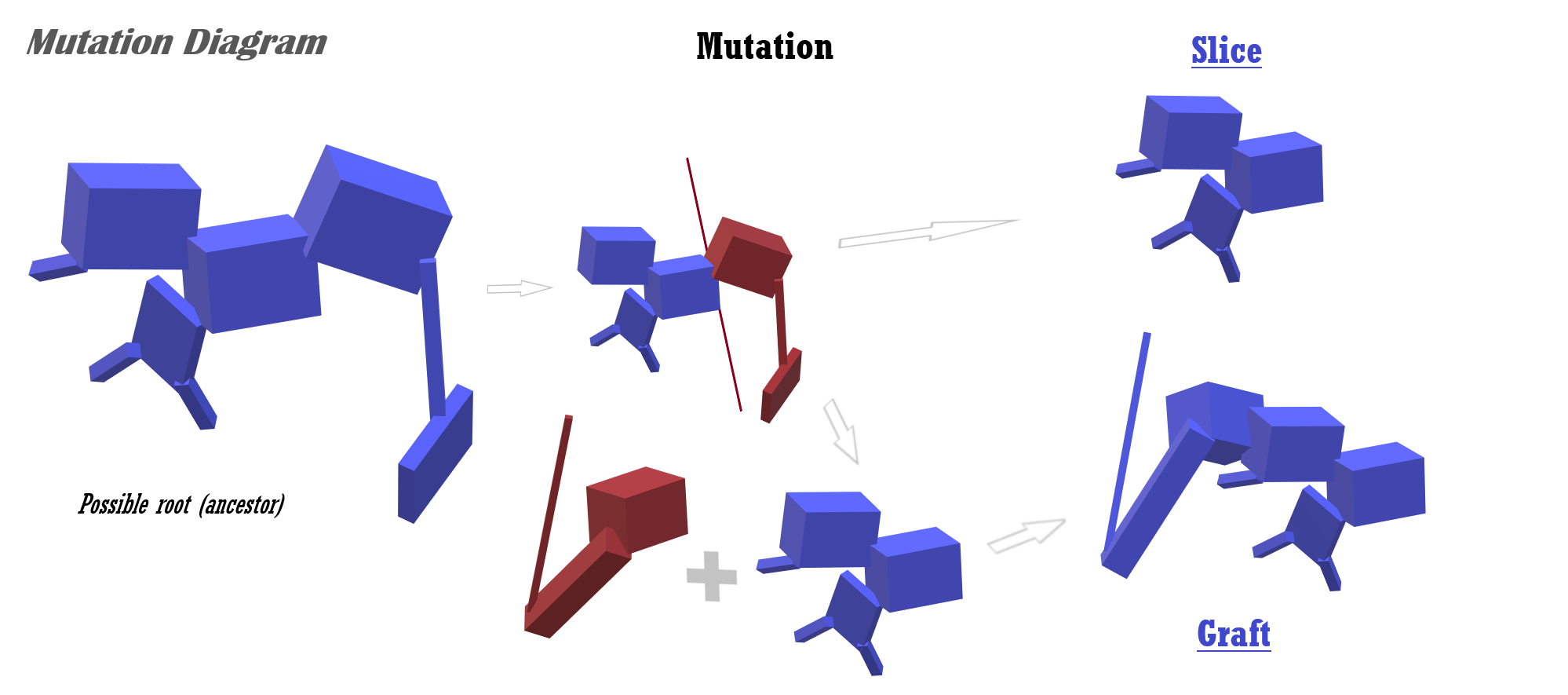
Below is an example of how we encode information into our creatures. This is the genetic information that is transfered and mutated over time:
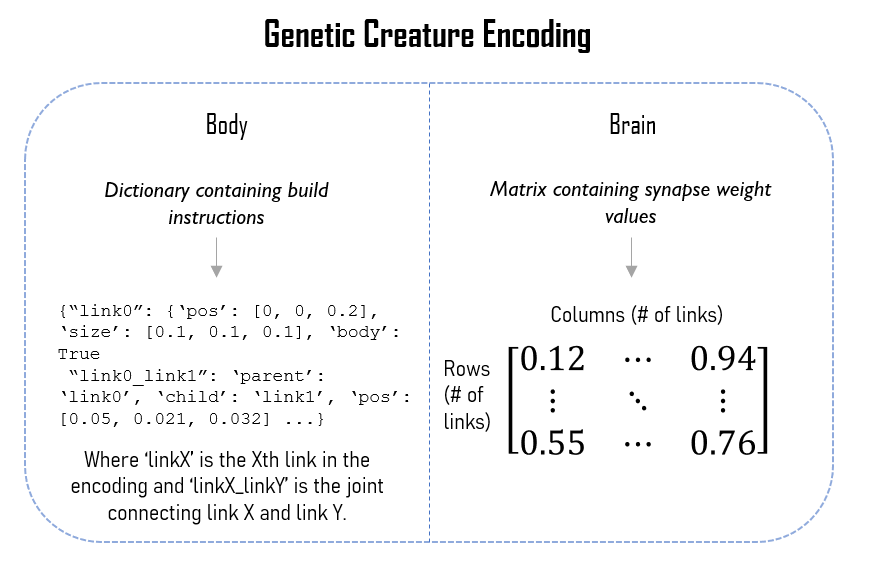
Creature brain structure
All creature brains are fully connected. During slicing synapses are removed from removed links/joints, and during combining synapses are retained. Sometimes combining errors (mutations) can occur that prevent weights from being carried over, resulting in random weights.
A visualization of a fully connected brain given a random 4-link creature morphology is shown below:
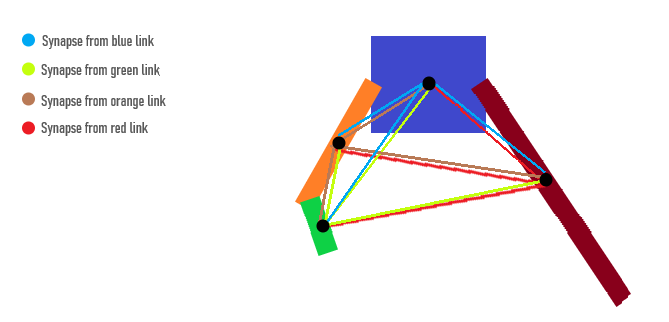
The evolution paradigm
A parallel hill climber is used to evolve creatures over time. An abstract visualization of the process is shown below:
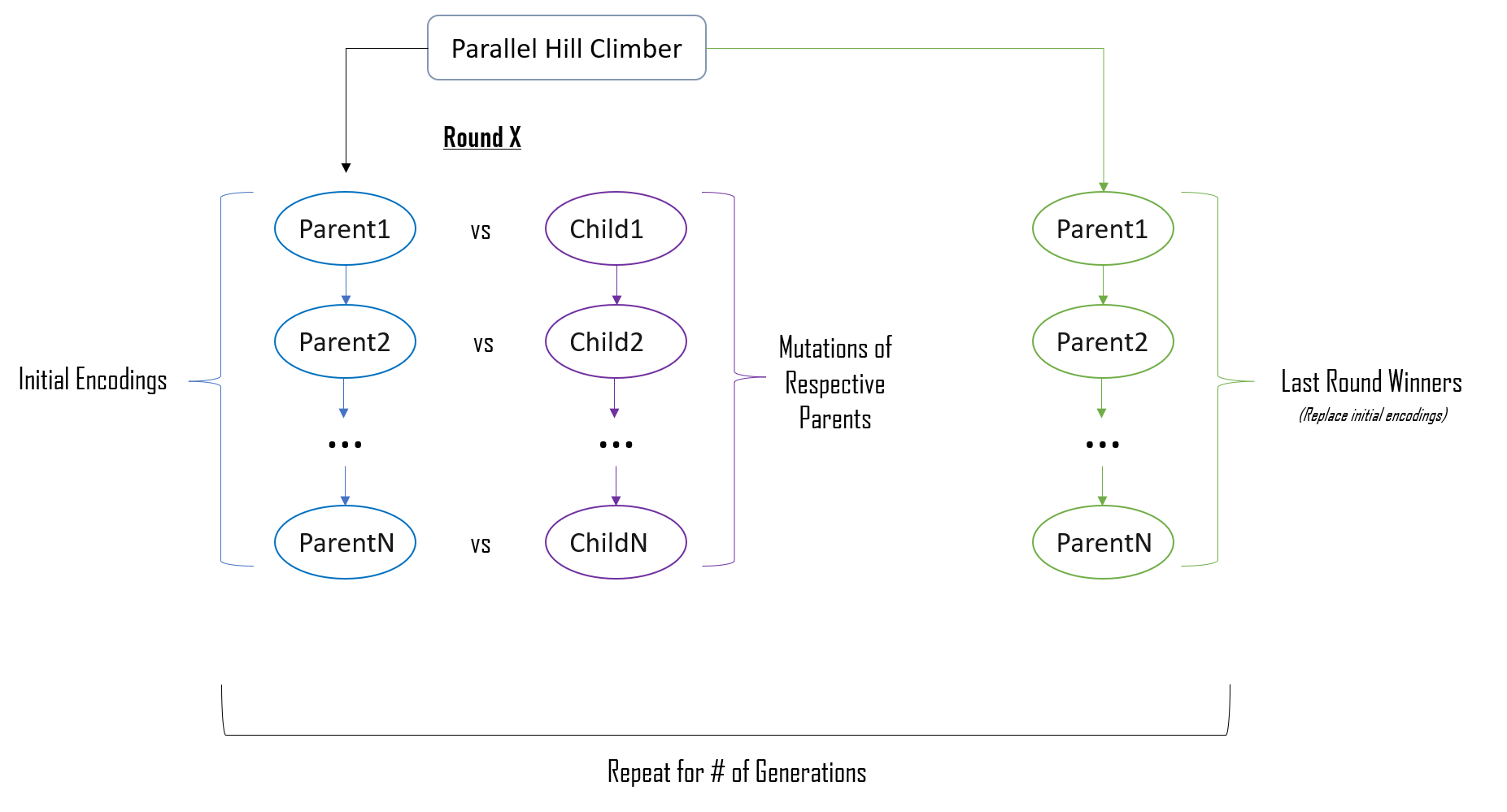
Fitness pilot
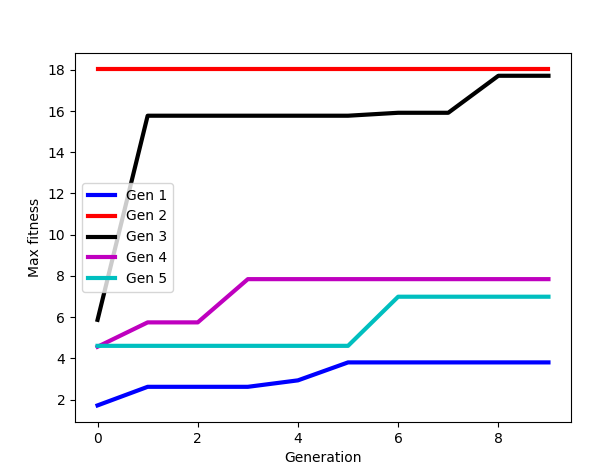
Here is the result of max fitness (y axis) versus number of generations (x axis) for 5 runs. Each run was made with a random seed (0, 1, …, 4).
Codebase Description
The solution.py file houses most of the inner workings of the mutation process. Mutate() accomodates slice and graft operations. Create_Brain carries over existing creature weights when using slicing and grafting to mutate. Creating the brain connections is relegated to sendSynapses(). makeFromEncoding() uses a newly introduced dictionary encoding of a genome and creates a URDF file from it. sliceEncoding() and deleteNames() comprise the functionality of the slicing operation over an encoding, and combineSlices() does the same for combining slices when grafting.
For more details, all linked code is documented.
What happened?
There doesn’t seem to be a convergence in terms of body structure/length, but population fitness increases nonetheless. Selection seem to be more focused on the neuronal level of the exsitings links responding “correctly” to sensory input. As seen in the below videos, creatures exhibit multiple different behaviours for moving in the negative y direction while keeping low in terms of the z axis. For example, in the brief 10 second visualization a creature can be seen crawling but another creature can be seen wiggling. The particular mutation paradigm here seems efficient for evolution.
Running
Clone repository and run:
pip install -r requirements.txt
To run a randomly generated creature:
python main.py random
To run a creature from the saved body and brain data:
python main.py saved
References
Education in Evolutionary Robotics is used as the basis for the parallel hill climber and most of the codebase.
Evolving Virtual Creatures is referenced for genotype graph inspiration.
Pyrosim is the foundational framework for body and brain simulation used by LudoBots.